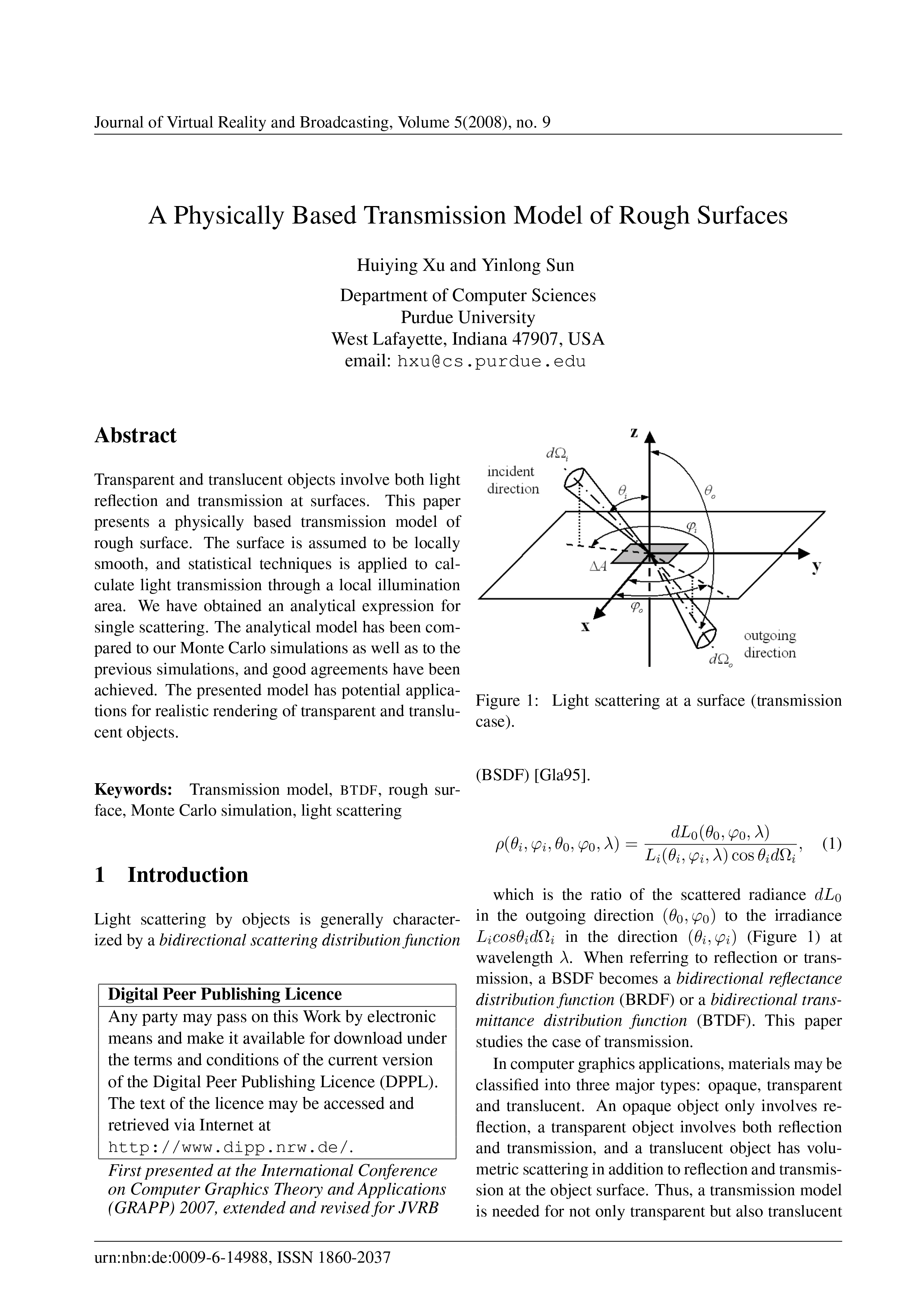A Physically Based Transmission Model of Rough Surfaces
DOI:
https://doi.org/10.20385/1860-2037/5.2008.9Keywords:
BTDF, Light Scattering, Monte Carlo Simulation, Rough Surface, Transmission ModelAbstract
Transparent and translucent objects involve both light reflection and transmission at surfaces. This paper presents a physically based transmission model of rough surface. The surface is assumed to be locally smooth, and statistical techniques is applied to calculate light transmission through a local illumination area. We have obtained an analytical expression for single scattering. The analytical model has been compared to our Monte Carlo simulations as well as to the previous simulations, and good agreements have been achieved. The presented model has potential applications for realistic rendering of transparent and translucent objects.
Published
2008-08-07
Issue
Section
GRAPP 2007





